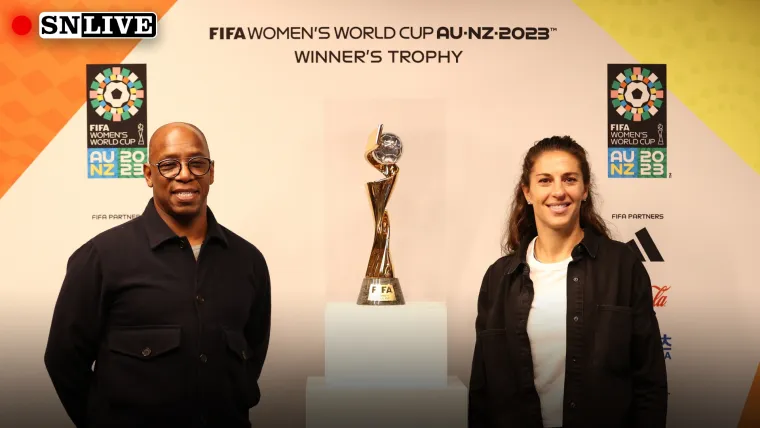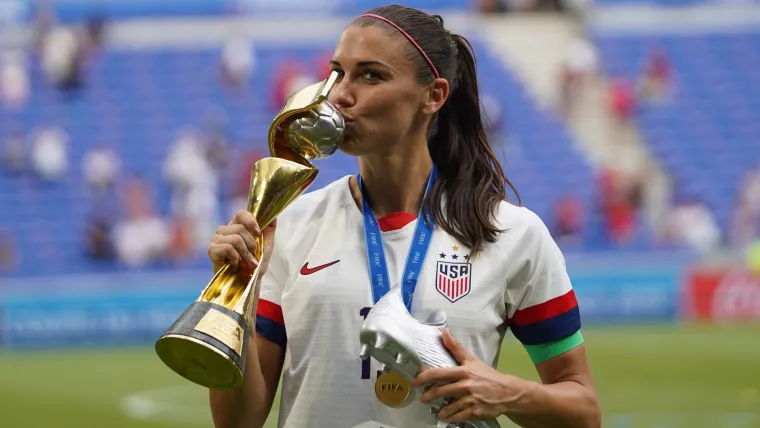In July and August, 2023, 32 teams graced the shores of Australia and New Zealand to fight for the right to be named the best team in the world of women's international football.
Some nations, like the USA and Germany, were aiming to win another tournament after celebrating multiple times in the past; others, such as France, England and Australia, were looking to win the biggest prize of all for the first time.
⚽ The FIFA Women's World Cup suddenly became very real for Australia defender Clare Hunt when she took part in the first stop on a tour of the trophy around the co-host nation https://t.co/gHIA2LVFBA 🏆@TheMatildas | #FIFAWWC pic.twitter.com/jgAtiyow5F
— Reuters (@Reuters) June 8, 2023
Every player dreams of hoisting the famous trophy above their heads as the ticker tape streams down and fireworks go off overhead, but what is it actually made of, and how much is it worth?
The Sporting News has the answers to those questions and more.
MORE: Which teams have qualified for the Women's World Cup?
Women's World Cup trophy size and weight
The Women's World Cup trophy has, since 1999, had a cone-shaped base, which has the names of the previous winners engraved underneath. According to FIFA , the trophy "takes the form of a spiral band, enclosing a football at the top", and "captures the athleticism, dynamism and elegance of international women's football".
It is 47cm (19in) tall, and weighs 4.6kg (10lb), which is smaller in weight than the men's trophy (6.2kg/13.6lb) but is taller (the men's trophy stands at 36.8cm/13.7in).

What is the Women's World Cup trophy made of and is it solid gold?
The Women's World Cup trophy, according to FIFA, is made from gold-plated brass, with the base manufactured from candeias granite. The disc inscribed with previous winners is gold. Other materials in the trophy include bronze and polished aluminium.
This is in contrast to the men's trophy, which is said to be made of solid 18-karat gold, though some doubt has been cast on these claims as some experts believe that, if this were the case, the trophy would be too heavy to lift.
How much is the Women's World Cup trophy worth?
In 2015, the Women's World Cup trophy had an estimated value of $30,000.
Whilst this is still a higher value of many of the major North American trophies, including the Stanley Cup and World Series' Commissioner's Trophy, it is dwarfed by the value of the men's World Cup, which is said to be worth an eyewatering $20 million.
| Trophy | Sport | Estimated Value (USD) |
| FIFA World Cup | Football | $20 million |
| FIFA Women's World Cup | Football | $30,000 |
| Stanley Cup | NHL | $23,000 |
| Commissioner's Trophy | MLB | $18,600 |
| Larry O’Brien Championship Trophy | NBA | $13,500 |
| Vince Lombardi Trophy | NFL | $2,000 |
Who made the Women's World Cup trophy?
The current Women's World Cup trophy was designed by William Sawaya and hand-crafted by Milanese specialists Sawaya & Moroni in 1998.
It was first lifted by the USA after their win on home soil in 1999, and has also been won by Germany and Japan since then.

How many Women's World Cup trophies are there and do countries keep it?
There are two World Cup trophies: the original, and a replica, called the "winners' trophy".
The original trophy is the one handed to the winning team after the World Cup final and is the one that every player yearns to hold once in their career.
That trophy is then given back to FIFA, which holds it in a secret location except for significant events such as the World Cup draw, the World Cup trophy tour or once a year at the FIFA museum.
Each winning team is then given the winners' trophy that they are allowed to keep.
Who can touch the Women's World Cup trophy?
The honour of being able to touch and hold the Women's World Cup trophy is reserved for only a select few.
According to the FIFA rules and regulations, other than players and coaching staff of the team that has just won the trophy, only FIFA officials, former winners and heads of state are permitted to touch the trophy.
This means that fans and other celebrities who may want to get a picture of themselves with the famous trophy are only allowed to do so under certain conditions.

